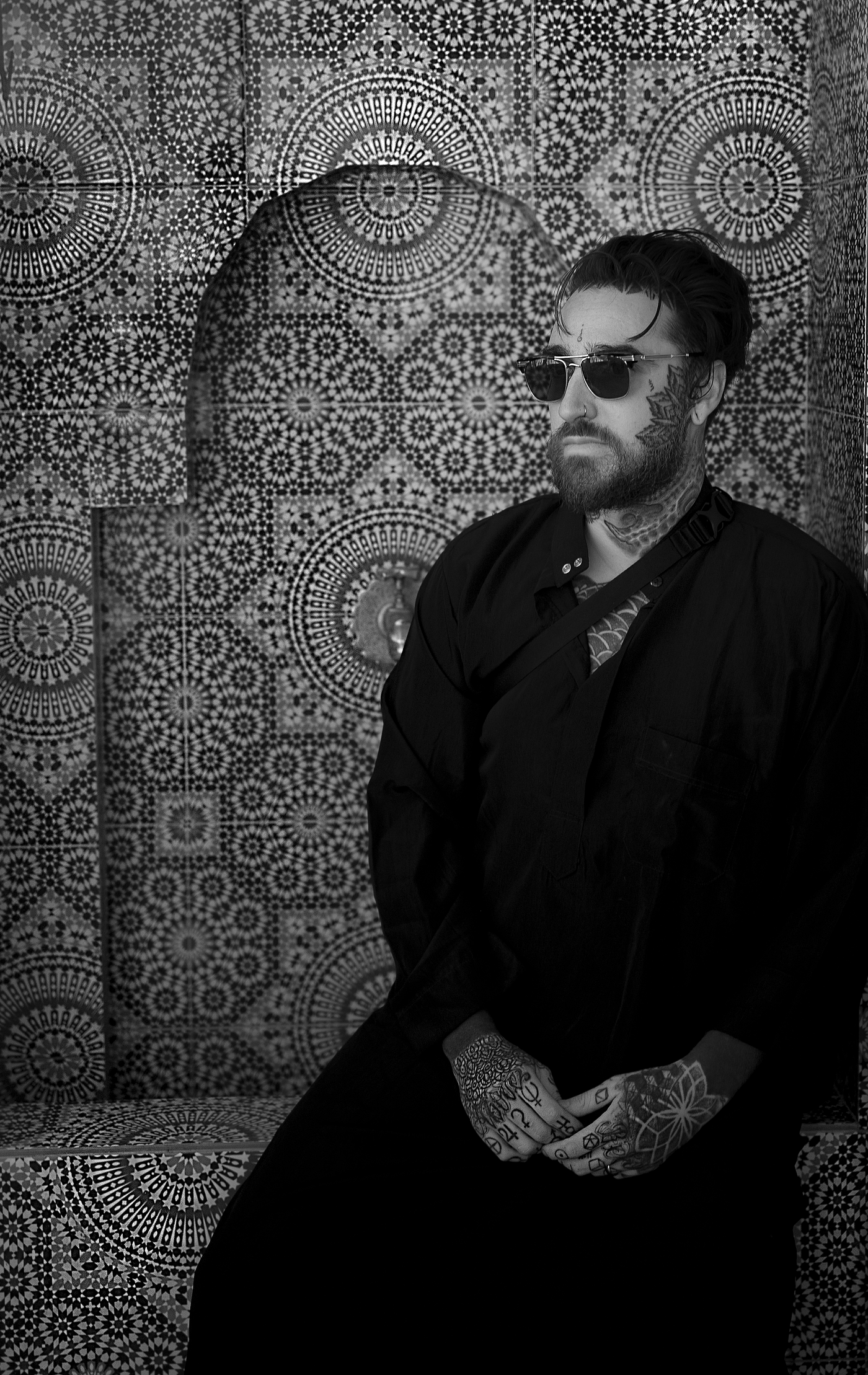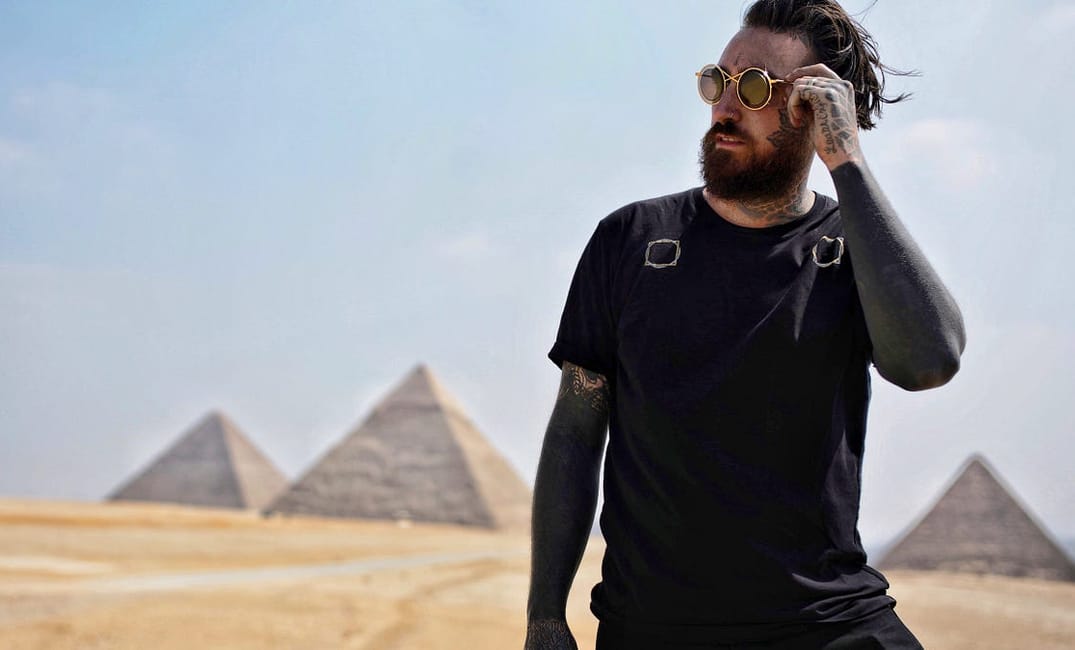
Tattoo artist Sai Li tells me upon my arrival at Black Serum in the Mission that we’ll have to be very quiet when I watch her tattoo a client. It is then, after stepping into my first tattoo studio, that I realize that this adventure may not be as exciting as I had anticipated. How serious, I think. How unadventurous.
As a relative newcomer to the Bay — six years and counting — I’ve been watching hesitantly as tattoos seemed to appear more often around me this past year. Tattooed arms of chefs and bartenders served me food at restaurants. Inner-thigh and rib-cage tattoos stared at me at a pool party last summer. Tattoos peeked out from under button-up shirt sleeves on BART, their owners reading some kind of sophisticated literature. Tiny tattoos in the form of demure stars or “meaningful” calligraphy appeared on some of my best friends. To me, these tattoos spoke of spontaneity — daring, rebellious life choices that I’ve been too meek to make.
Tattoos have become the norm among celebrities and the fashion elite and have trickled down to your garden-variety tech workers and HR managers. But I’ve always believed that it takes a lot of courage and attitude to get one. For someone who takes torturous hours just to pick her next Rent the Runway shipment, a tattoo’s permanence and boldness remains inconceivable to me.
“A lot of the time, society tells you your body isn’t yours, but tattoos are a way to reclaim parts of your body.”
In Israel, where I grew up, tattoos are getting more traction too. But they’re frowned upon by the Jewish faith, as any purposeful, permanent changes to the human body aren’t allowed. In the Bay Area, the land of kombucha gods and avocado holiness, tattoos are a fixture.
Here the historic foundation of tattoos is solid; this is the home of the legendary Ed Hardy, the subject of a recent exhibition at the de Young Museum. This is where Janice Joplin got her history-making bracelet and heart tattoo from the legendary Lyle Tuttle. Way before her, the lively scene of miners, migrants, and sailors set the stage for the craft. With a thriving Asian population (another exhibition, this time on Japanese tattoos, ran last summer at the Asian Art Museum) and the historic presence of the Ohlone Native Americans, the Bay Area tattoo scene is diverse and has been influenced by many forces. But I’ve recently come to learn that the local scene is not what I expected.

Take Sai Li, for example. Reserved and bespectacled, she came to San Francisco from China for an MFA at the San Francisco Art Institute. She quickly realized that the schmoozing synonymous with the art scene wasn’t for her. She landed an apprenticeship atBlack Serumand applied her drawing skills to a new medium.
Li specializes in manga and anime-style tattoos and has a gentle illustrative style. Angela Wu, her client on the day when I was invited to observe, is only 21 years old, but she’s already on her fifth tattoo, a black-and-white anime scene meant to take a permanent position above her right knee. Wu, an art lover, tells me that she started getting tattoos two years ago after having soaked up inspiration on social media.
Watching a tattoo being done, I can’t help but notice how ceremonious it is. Every step is carefully explained, and a preparatory talk-through precedes every move. Li’s workstation at the decidedly goth Black Serum is meticulously arranged, and as moody music quietly plays in the background, Li puts on a face mask and gets to work.
Wu lounges on a tattoo bed. Her phone is secured in a special device meant for clients who want to scroll on their phones as ink penetrates their skin. Many of Wu’s friends have tattoos. “A lot of the time, society tells you your body isn’t yours, but tattoos are a way to reclaim parts of your body,” she says. “I gravitate toward people who think the same way.” She’s calm as Li works on her tattoo — there are no signs of stress, sweat, blood, or tears. She’s used to the pain by now, Wu says. Besides, as Li tells me, some body parts — like a fleshy upper thigh — aren’t as sensitive as others.

Another local tattoo artist I talk to, Jess Koala, says that more than anything else, tattoos in the Bay today are about identity — both for the artists and their clientele. She, too, has an art degree, in Studio Art from SF State. Working out of Castro Tattoo, Koala is known for her vibrant, colorful style featuring pops of neon and seemingly simple, naive lines.
“The internet has really changed the game,” Koala says, “as far as presenting yourself to the world and finding a following in tattooing or the arts.” You can stand out by funding a niche; Koala is a member of the Queer Tattoo Alliance, which throws events in the Bay Area. Her clientele tend to gravitate toward the unique. “Zines and the Riot Grrrl movement really got my interests in art flowing as a teen,” she adds. “Because of my politics and being open as queer, I tend to get a lot of radical-minded and queer clients.”
A prime example of self-marketing and creating a distinct persona is Oakland-based celebrity tattoo artist Dillon Forte. “It used to be that you would walk into a shop, and whoever was available would tattoo whatever you wanted. This still exists; however, artists are now sought out to realize their artistic vision,” Forte says.

With famous clients such as Usher, Kehlani, Kat Von D, and Chris Hemsworth, Forte’s studio, Sri Yantra Tattoo, belongs to a newer generation of artists as influencers.
His popular Instagram account showcases his travels and his tattoos in precise, broody monochrome. His style, Forte says, “is based on sacred geometry and the mathematics of nature.” His most devoted clients may fly to meet him wherever he decides to travel. When I ask Forte how the industry has changed in the past few years, he replies, “I think the stigmas against people with tattoos are changing,” referring to the age-old perception of tattoos as the stylistic choice of criminals and sailors. “I foresee tattoos becoming even more of a cultural norm.”
Sai Li. Jess Koala. Dillon Forte. All the artists I interviewed have serious social media presence; Koala has 19,000 Instagram followers, and Li and Forte have over 50,000. But these artists’ perception of tattooing is anything but frivolous. They tell me about commemoration and symbolic tattoos. About childhood dreams and pressing statements people want to ink on their body parts. Their language in my interviews with them, on their websites, and on Instagram is dripping with respect and contemplation.
These tattoo artists inspired me to contemplate. Smartphones — and social media platforms in particular — have contributed to the rise of tattoo popularity everywhere. But it is here, more than any other American or European city, that I find people in every public sphere staring at their devices, their AirPods securely in, consumed by whatever the screen contains. Could it be that tattoos also offer refuge from the temporary and uncertain? In unpredictable times for anyone with a job, a relationship, and a political affiliation, things can change quickly. Media outlets close or “restructure” abruptly; health fads spike and disappear; and public figures flail and pivot.
Acquiring a deeply personal mark on your skin, as your hand is expertly held through every step, might just be the most comforting, all-present experience you didn’t know you needed. Sure, it hurts, but even physical pain can be reassuring — it’s there, unlike a friend who’s ghosting you or a lover you’ve never met IRL.
It takes courage to get a tattoo, but not the type I thought. Getting a tattoo isn’t about being spontaneous and reckless — well, maybe for some — but it can also be about a craving for long-term commitment, belonging, and stability. And while tattoos are just one means to an end, perhaps one day you’ll see me on BART featuring a delicate snowflake on my wrist — a symbol of Russia, the country I was born in. Or a Hebrew letter of significance. Or my daughter’s name in italics. I’m browsing Instagram for inspiration now.







